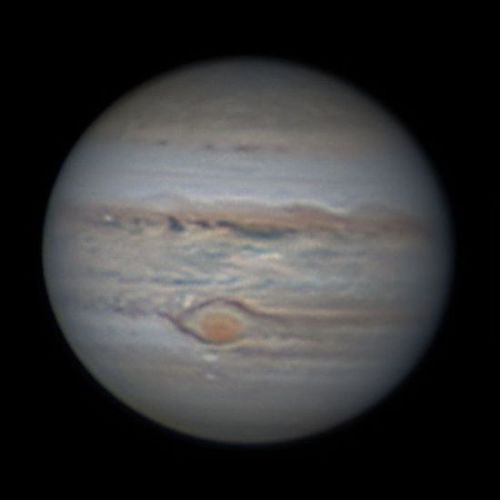 (James Clark)
(James Clark)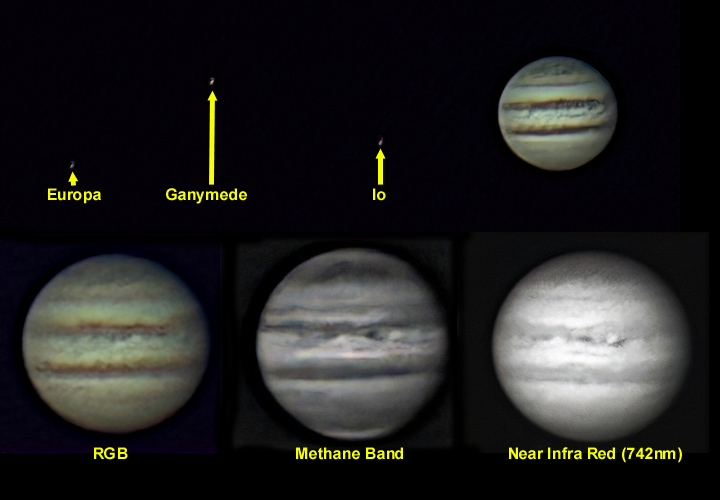 (John Arnold 21/08/2023)
(John Arnold 21/08/2023)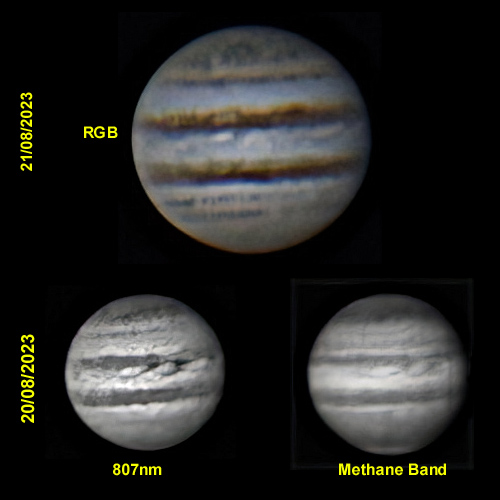 (John Arnold)
(John Arnold)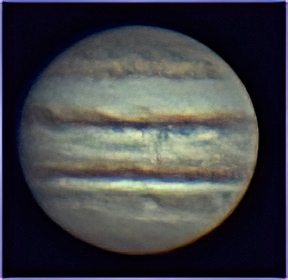 (John Arnold 07/12/2022)
(John Arnold 07/12/2022)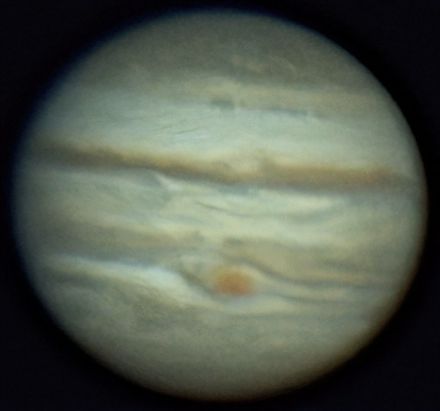 (John Arnold 30/10/2022)
(John Arnold 30/10/2022)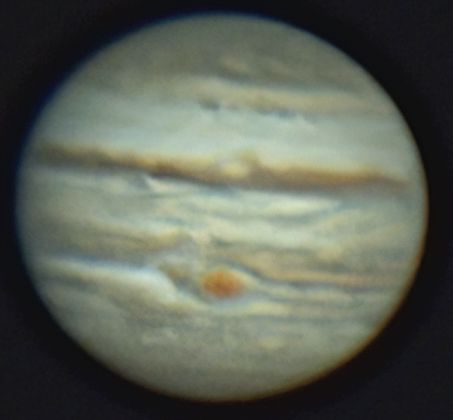 (John Arnold 30/10/2022)
(John Arnold 30/10/2022)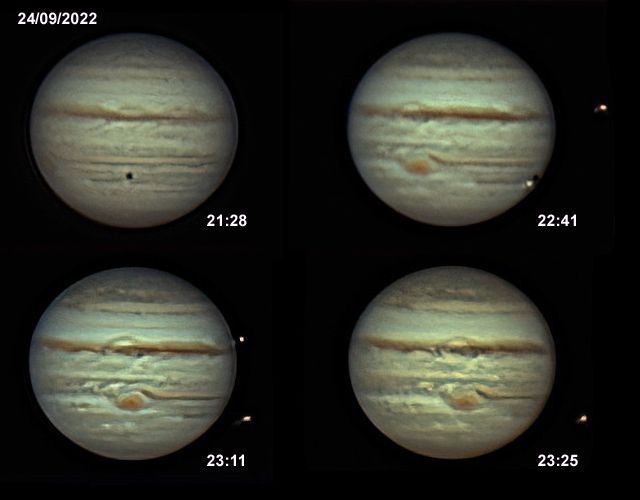 (John Arnold)
(John Arnold)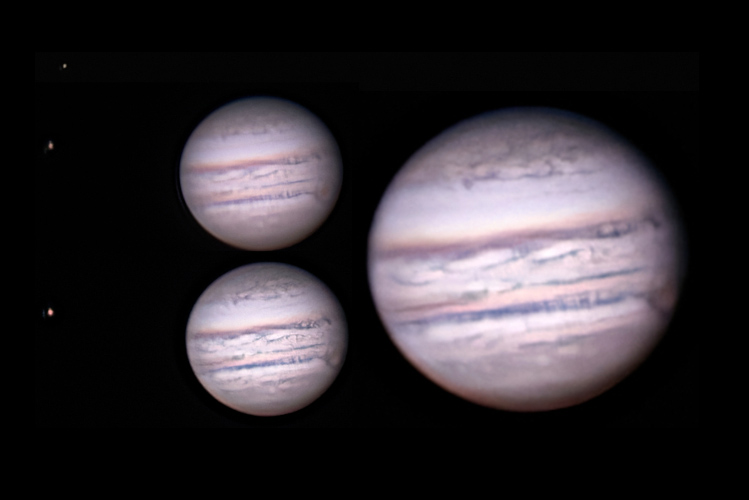 (John Arnold)
(John Arnold)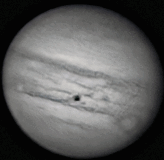 (John Arnold) (Io)
(John Arnold) (Io)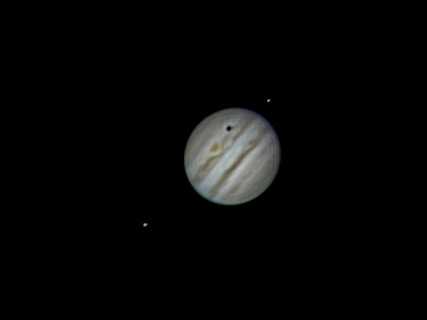 (Ray Emery)
(Ray Emery)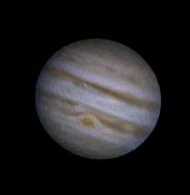 (Rod Levene)
(Rod Levene)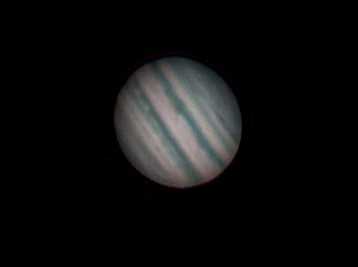 (Rod Levene)
(Rod Levene)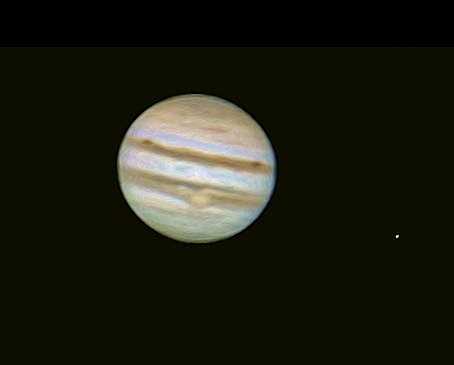 (Rod Levene)
(Rod Levene)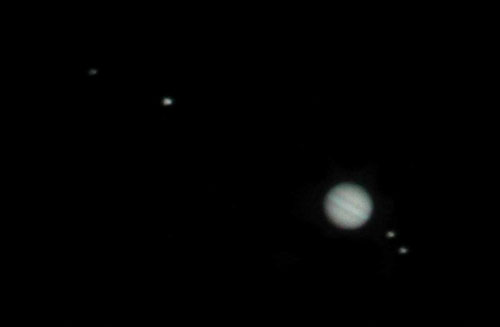 (Howard Herbert)
(Howard Herbert)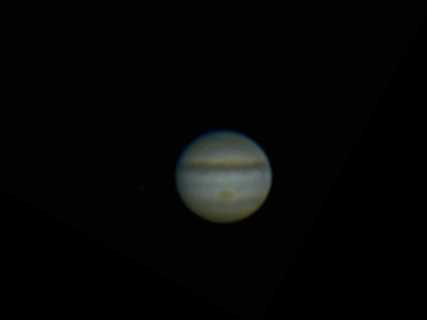 (Dan Mortimer)
(Dan Mortimer)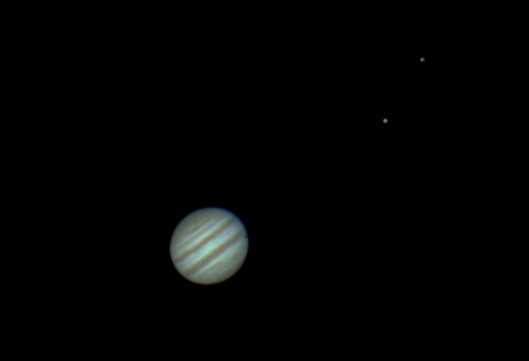 (Kevin Taylor)
(Kevin Taylor)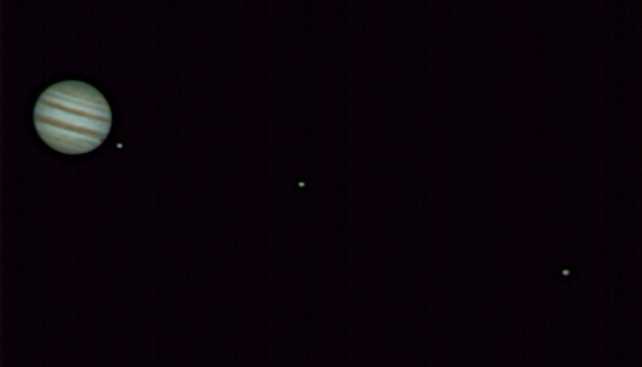 (Kevin Taylor)
(Kevin Taylor)
Information...
90 min Jupiter animation by LAS member James Clark.
Jupiter is the fifth planet from the Sun and is the largest in our Solar system. With a radius of about 71,492 km (about 11.2 × that of the Earth), it's mass is 2½ times larger than all the other planets combined. It is still however dwarfed by the Sun whose mass is 1,000 times larger still.
Jupiter is a gas-giant, with it's atmosphere being primarily comprised of hydrogen (85%) and helium (15%), along with other trace elements (including ammonia, methane, ethane, acetylene, water, hydrogen cyanide & carbon monoxide). Being such a large planet, it's gravity is much larger than on Earth & even at the cloud-tops it's gravity is still 2.54 × that on Earth. Yet its density is only 1.3 g/cm3, only slightly more than liquid water.
Jupiter is also curious in that it radiates over 50% more energy than it receives from the Sun...
The planets orbit has a period of 11.86 years, but it's rate of rotation is the fastest of all the Solar system's planets, being only 9.92 hours at the equator. At the poles, the rotation rate is even higher.
The bands of cloud formations are thought to be due to three major cloud layers, resulting from different chemicals condensing at different temperature and pressures. The highest cloud layer is thought to be ammonia ice, the middle layer ammonium hydrosulphide, and the lowest layer comprised of liquid water and ice. The different colours come from the different temperature ranges & therefore from the different levels. The winds on Jupiter also flow in alternating east-west and west-east bands, which correspond to the the alternating colour bands. The bright coloured bands (called zones) have gas rising, whilst the dark coloured bands (called belts) have gas falling.
One notable feature is the 'Great Red Spot', a storm cloud which has been observed for over 300 years and is larger than the Earth.
Jupiter has 79 moons, with the main Galilean Moons (Io, Europa, Ganymeade and Callisto) being visible even with low power telescopes.
For much more detailed information on Jupiter see the Wikipedia entry.